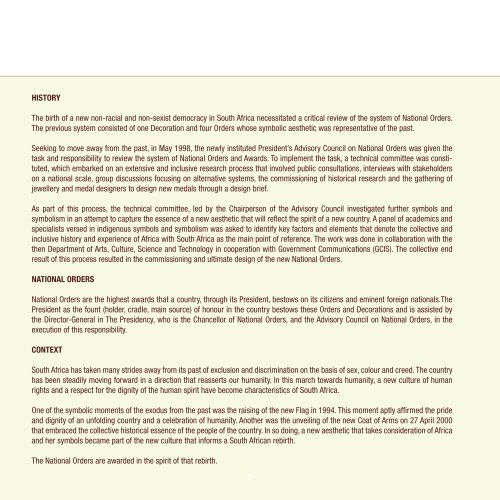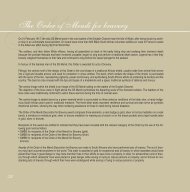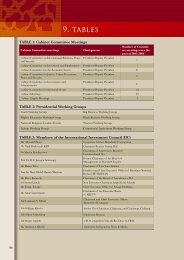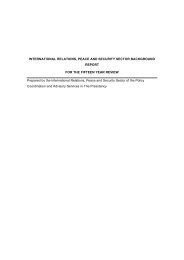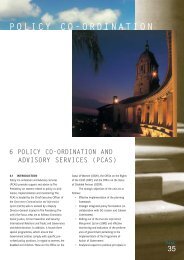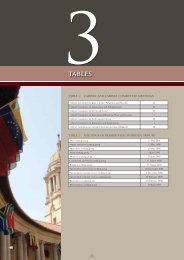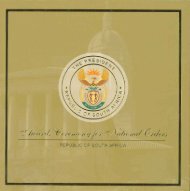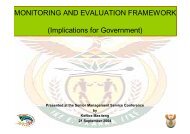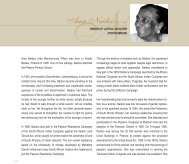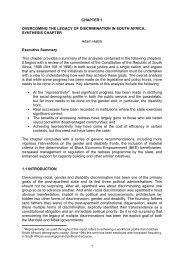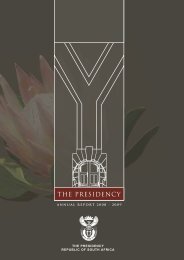National Orders 2011.indd 1 4/21/11 2:00:52 PM - The Presidency
National Orders 2011.indd 1 4/21/11 2:00:52 PM - The Presidency
National Orders 2011.indd 1 4/21/11 2:00:52 PM - The Presidency
You also want an ePaper? Increase the reach of your titles
YUMPU automatically turns print PDFs into web optimized ePapers that Google loves.
HISTORY<br />
<strong>The</strong> birth of a new non-racial and non-sexist democracy in South Africa necessitated a critical review of the system of <strong>National</strong> <strong>Orders</strong>.<br />
<strong>The</strong> previous system consisted of one Decoration and four <strong>Orders</strong> whose symbolic aesthetic was representative of the past.<br />
Seeking to move away from the past, in May 1998, the newly instituted President’s Advisory Council on <strong>National</strong> <strong>Orders</strong> was given the<br />
task and responsibility to review the system of <strong>National</strong> <strong>Orders</strong> and Awards. To implement the task, a technical committee was constituted,<br />
which embarked on an extensive and inclusive research process that involved public consultations, interviews with stakeholders<br />
on a national scale, group discussions focusing on alternative systems, the commissioning of historical research and the gathering of<br />
jewellery and medal designers to design new medals through a design brief.<br />
As part of this process, the technical committee, led by the Chairperson of the Advisory Council investigated further symbols and<br />
symbolism in an attempt to capture the essence of a new aesthetic that will reflect the spirit of a new country. A panel of academics and<br />
specialists versed in indigenous symbols and symbolism was asked to identify key factors and elements that denote the collective and<br />
inclusive history and experience of Africa with South Africa as the main point of reference. <strong>The</strong> work was done in collaboration with the<br />
then Department of Arts, Culture, Science and Technology in cooperation with Government Communications (GCIS). <strong>The</strong> collective end<br />
result of this process resulted in the commissioning and ultimate design of the new <strong>National</strong> <strong>Orders</strong>.<br />
NATIONAL ORDERS<br />
<strong>National</strong> <strong>Orders</strong> are the highest awards that a country, through its President, bestows on its citizens and eminent foreign nationals.<strong>The</strong><br />
President as the fount (holder, cradle, main source) of honour in the country bestows these <strong>Orders</strong> and Decorations and is assisted by<br />
the Director-General in <strong>The</strong> <strong>Presidency</strong>, who is the Chancellor of <strong>National</strong> <strong>Orders</strong>, and the Advisory Council on <strong>National</strong> <strong>Orders</strong>, in the<br />
execution of this responsibility.<br />
CONTEXT<br />
South Africa has taken many strides away from its past of exclusion and discrimination on the basis of sex, colour and creed. <strong>The</strong> country<br />
has been steadily moving forward in a direction that reasserts our humanity. In this march towards humanity, a new culture of human<br />
rights and a respect for the dignity of the human spirit have become characteristics of South Africa.<br />
One of the symbolic moments of the exodus from the past was the raising of the new Flag in 1994. This moment aptly affirmed the pride<br />
and dignity of an unfolding country and a celebration of humanity. Another was the unveiling of the new Coat of Arms on 27 April 2<strong>00</strong>0<br />
that embraced the collective historical essence of the people of the country. In so doing, a new aesthetic that takes consideration of Africa<br />
and her symbols became part of the new culture that informs a South African rebirth.<br />
<strong>The</strong> <strong>National</strong> <strong>Orders</strong> are awarded in the spirit of that rebirth.<br />
6<br />
<strong>National</strong> <strong>Orders</strong> <strong>20<strong>11</strong>.indd</strong> 6 4/<strong>21</strong>/<strong>11</strong> 2:<strong>00</strong>:<strong>52</strong> <strong>PM</strong>


